Media | Articles
Electrogenic’s electric E-Type is more than a weekend toy
It’s a glorious summer’s day. The heat of the sun beating down perfectly balances the cooling air that rushes around the edge of the windscreen and into the cabin of the 1962 Series 1 Jaguar E-Type Roadster. I can smell freshly cut grass as we cruise through country lanes. Above the gentle rumble of tires on road is the sound of birdsong.
There’s no intake noise, no exhaust burble, not an intonation of internal combustion to be heard, however, because this classic Jaguar has been converted to battery power using a circa $120,000 drop-in kit from the British specialists at Electrogenic.
Developed by the Oxfordshire-based company, and available worldwide through a network of approved partners, the kit is a straight swap for the engine and gearbox of an E-Type, from Series 1 to 3. Under the forward-hinged clamshell hood is a battery box, and the space originally taken up by the transmission is used to house an electric motor. More batteries sit in the rear, where the fuel tank would normally be.
One of the evils of EV conversions is added weight, and yet this battery-powered E-Type is actually 132 pounds lighter than Jaguar’s original. The example in which I’m riding is fitted with the Electrogenic’s smallest (43-kWh) battery pack, but even with the largest one (62 kWh), the driveline swap adds just 110 pounds—the weight of one small passenger—to the donor car.
Behind the wheel is a very relaxed Alex Bavage, Electrogenic’s system architect engineer and partnership manager. As this E-Type is a customer car, not a company-owned demonstrator, I’m starting the drive in the passenger seat, awaiting our arrival at a disused airfield, where I can have a go. As we meander along B-roads lined high with hedgerows, Bavage explains Electrogenic’s conservative approach to its conversions: “We want the car to drive like the original, for you to enjoy driving it like a classic and not a modern EV.”
Marketplace
Buy and sell classics with confidence
That means keeping the weight as close to that of the standard car as possible and maintaining the distribution of that weight front to rear. Electrogenic’s philosophy also requires that it avoid the temptation of the crazy performance that electrification can offer: For the E-Type conversion, it offers a 120-kW (163 hp) or a 150-kW (204 hp) motor, depending on a customer’s hunger for speed versus driving range.
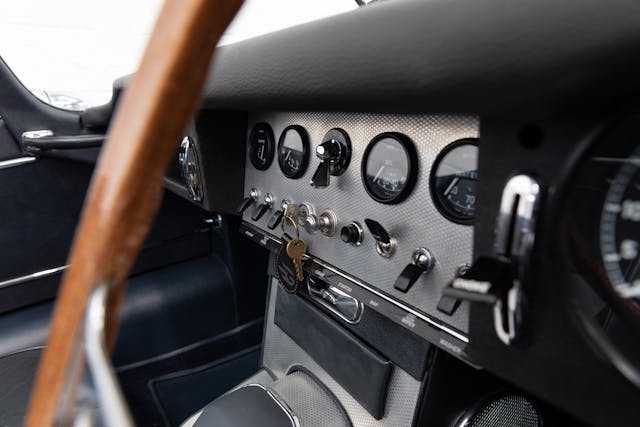
A toggle switch on the Jaguar’s turned-aluminum dashboard provides three different drive modes—standard, eco, and performance. Each maps slightly different power, torque, and regeneration curves. The car isn’t set with full one-pedal driving, although if a customer really wanted the feature, Electrogenic’s software could deliver.
We arrive at the airfield, where Bavage explains the controls. To start, you turn the key and push a button, but nothing much happens except for a light appearing on the dashboard. Customers can pick which switch they want to use to engage drive: On this car, the customer chose to repurpose the choke. Slide it up to go forwards, down to go back.
I start in the standard drive-mode setting. Like most electric vehicles, the Jaguar feels pretty eager off the line. Acceleration is linear, and the lovely, wood-rimmed Moto Lita steering wheel immediately lightens in my hands.
Given that Bavage and his fellow engineers actually took weight out of the car, they felt no need to modify the original suspension, brakes, or steering. When I hit the brake pedal for the first time, this authenticity catches me by surprised: Not much happens for the first inch or so of travel. Finally, the brakes begin to bite, discs and electric motor working together to slow the car down. The car pitches forward as it slows, a behavior quite familiar to E-Type owners, Bavage says.
In Eco mode, the throttle is less responsive than in standard mode—at least, until you press the pedal fully into the carpet. In Performance mode, the Electrogenic E-Type is probably more sprightly than most of its gas-powered ancestors, despite not packing much punch on paper: That’s the 358 lb-ft of torque doing its job. Electrogenic claims that even this lowest-powered conversion will reach 60 mph from a standstill in less than six seconds, with the highest spec shaving a second off that. It’s not the internal-organ-rearranging thrust of a current EV, but that was never part of the plan. Imbue a classic car with modern performance, and you’d need to upgrade its handling and stopping ability accordingly.
With a realistic driving range of 150 miles and DC fast charging at up to 60 kW, this electric vehicle won’t require you to stop as much as you might have thought, anyway. Not just a weekend toy, this Jaguar could take you on a real road trip, if not quite at the pace of the Mille Miglia.
Compared to Electrogenic’s Porsche 356 and 911 conversions, the E-Type feels the most suited to silent running. Especially when the sun’s out and the birds are singing.
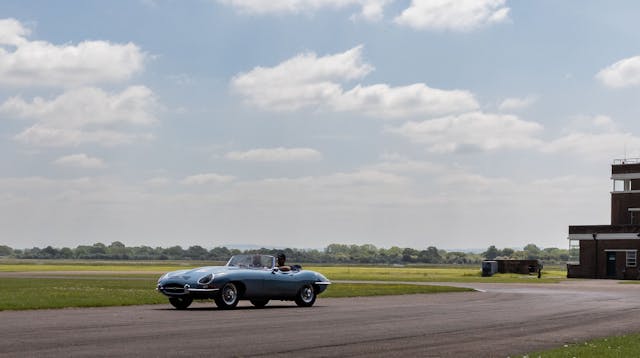
***
Check out the Hagerty Media homepage so you don’t miss a single story, or better yet, bookmark it. To get our best stories delivered right to your inbox, subscribe to our newsletters.
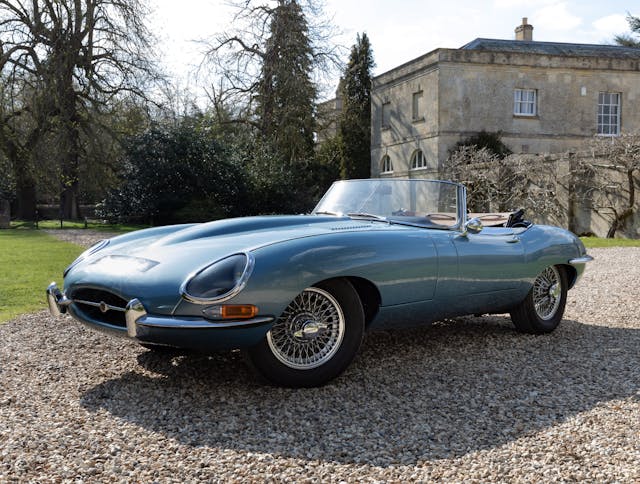
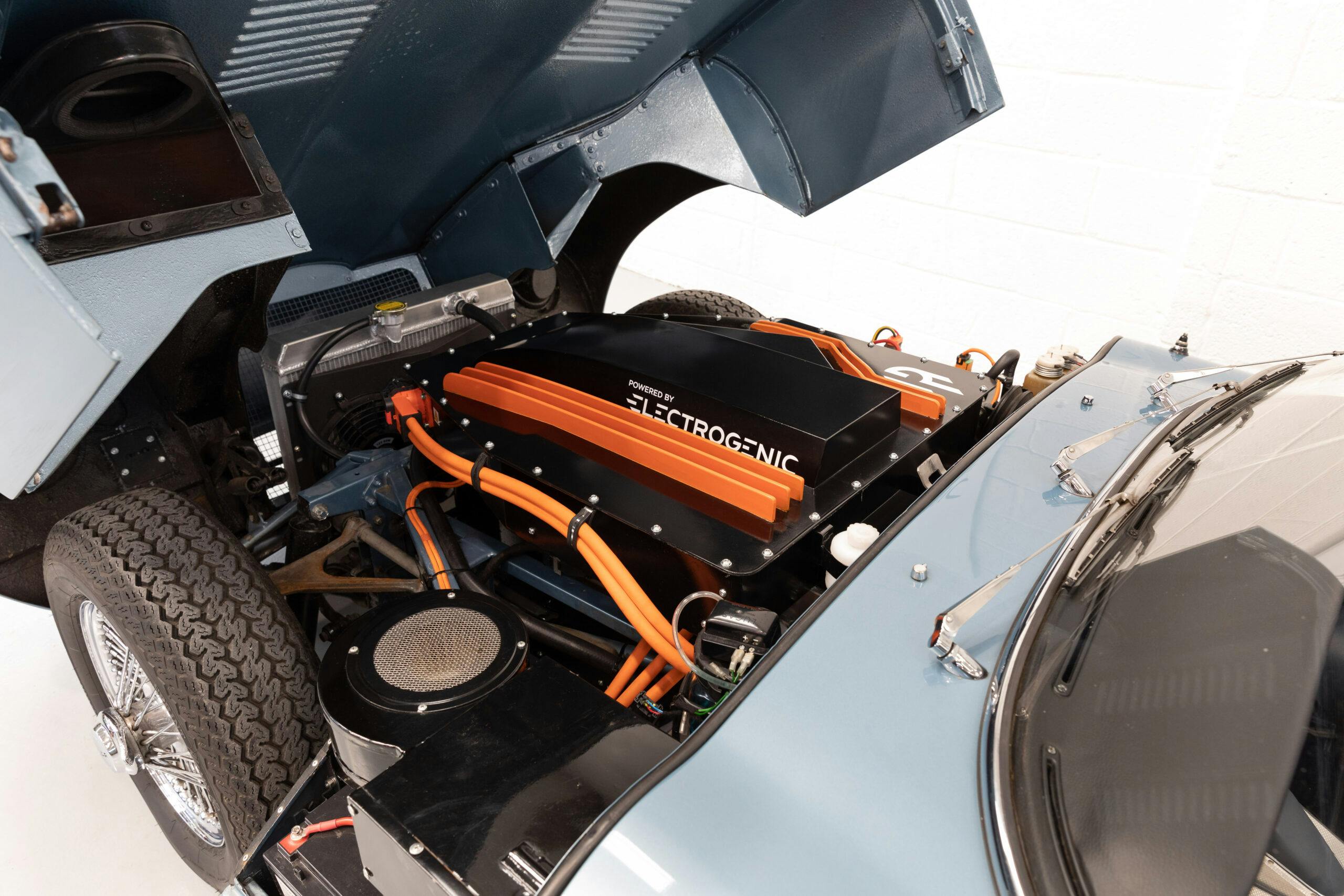
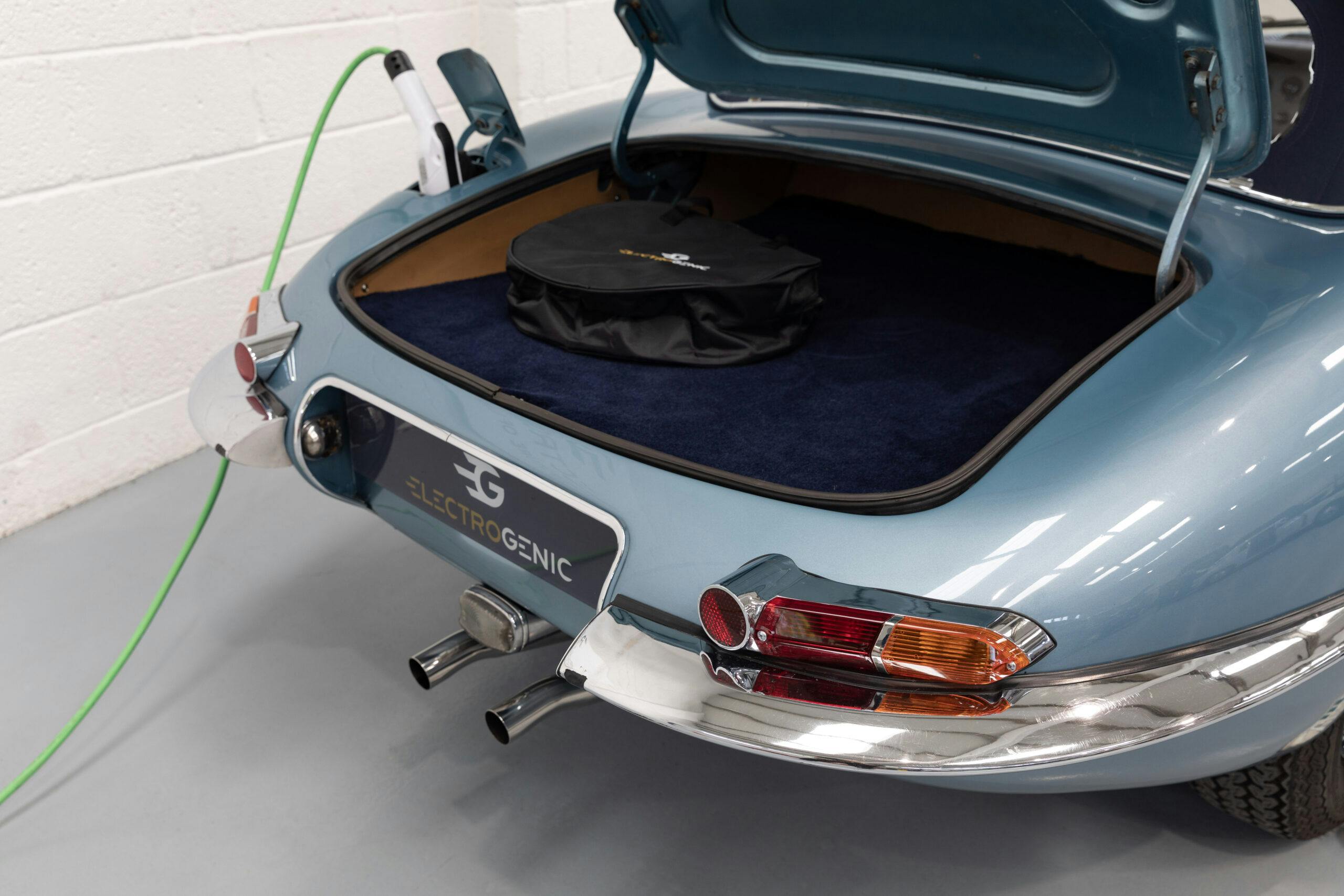















Sounds like a lot of effort, time and planning to create a usable package. I don’t think I will let the 3.8 engine go in my 63 FHC though.
Sacrilege!
I like birds as much as the next guy, but the cockpit of an E-type is not the place to listen to them, (unless of course you are parked in the grass for a picnic!
What a waste of a perfectly good E Type.
I kind of wish they had done a better job angling the J1775 to keep the cord away from the body, other than that I like it. Range is more than enough for what most people are going to do with a car like this, short weekend drives and day trips, maybe an evening out or a local car show. Anyone that says they would take it on an overnight trip but the range isn’t enough would be suspect in my book, there is no way you would park a 1962 e-type convertible (gasoline or not) in a hotel parking lot overnight and get any sleep.
What a waste of a fabulous car! Just because you can, doesn’t mean you should!
$120k to ruin an E-type and have 150 mile range? I would be in trouble on my weekend cruise.
Isn’t the point of driving a flat floor E-Type to hear the spectacular sound of the Inline 6??
Possibly the very worst car to make an EV! Take a simple and rugged engine that is based on Le Mans winning engines, one of the very best sounding engines of all time, one that defines the very essence of the car’s long proud nose, and make it sound like a Tesla. Sounds like a criminal offense to me!
Don’t get me started on people who replace the XK 6 in Jaguars with a SBC or LS engine. If there’s any reliable part on a vintage Jaguar, it’s the engine.
somehow not double-clutching or downshifting defeats the whole purpose of driving;
now the thing’s an antiseptic slot car or soulless golf cart;
When everyone is driving EVs and most of the commercial vehicles are electric, as well, I’ll be pleased to drive my ICE powered old cars on 35 cent/gallon gasoline as demand drops. Still, a noiseless E-type is not what I would want.
All the above comments are spot on. Why take all the fun, history and brilliant design out of a known automotive hallmark to produce this weak knee-ed nothing of a driving experience. I’ll stick with my 4.2 but continue to acknowledge that the 3.8 is the sweeter of the two REAL engines for this automotive icon. Bet you can’t fix this one by the side of the road, if you’re a capable wrencher… which is what the original was meant for! This ain’t no “crumpet collector”, it’s a woke travesty.
Maybe. It’s hard to imagine an early E-Type with the wonderful sound of the 6 cylinder engine. It might seem more appropriate in the Series 3, they were much more into grand touring by that time.
A pointless exercise at best. There should be a special place in hell for people who electrify classic cars. What kind of people buy these things?
As an aging Boomer I try diligently not to be overtly curmudgeonly (“Get off my lawn!”), but in the case of an E-type I agree this is sacrilege.
I wouldn’t even do that to a Miata. And a Miata, especially my NA with a nice intake and exhaust, has it’s own charm.